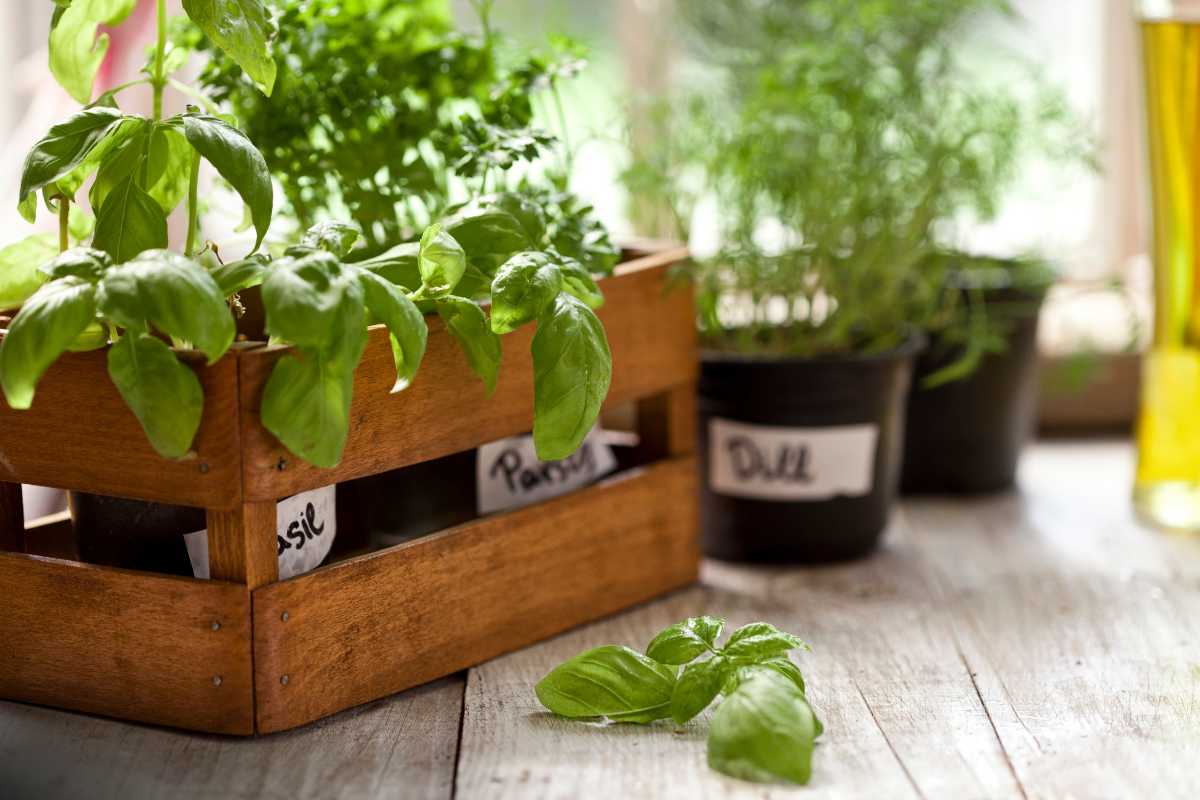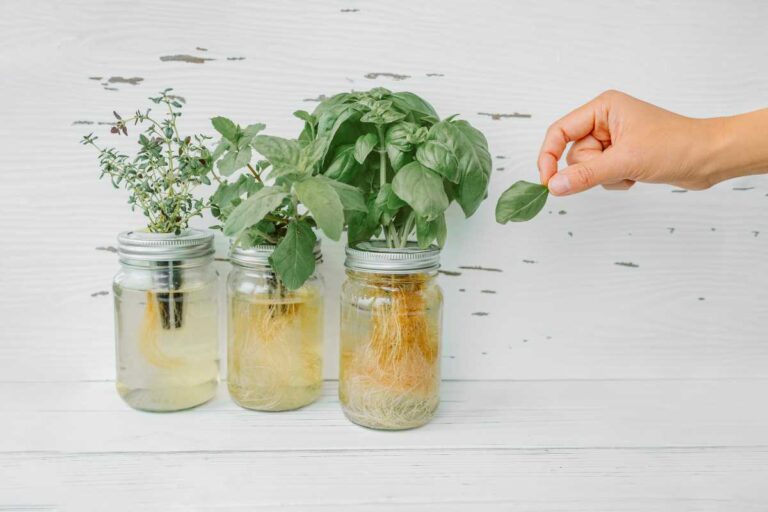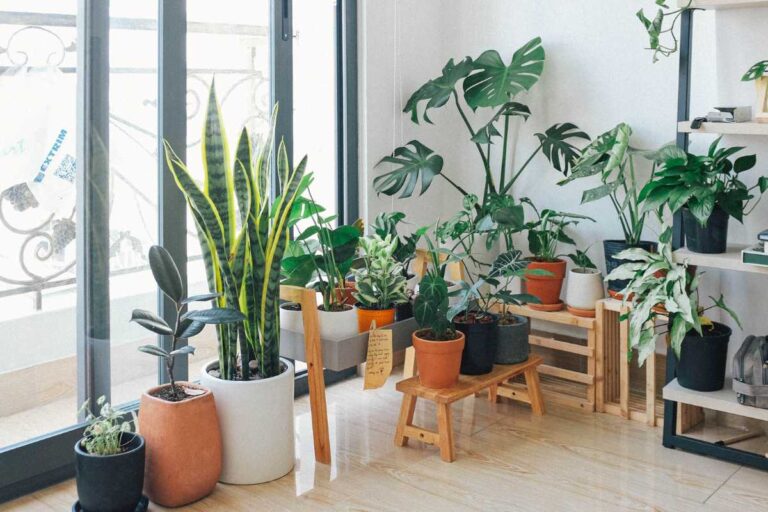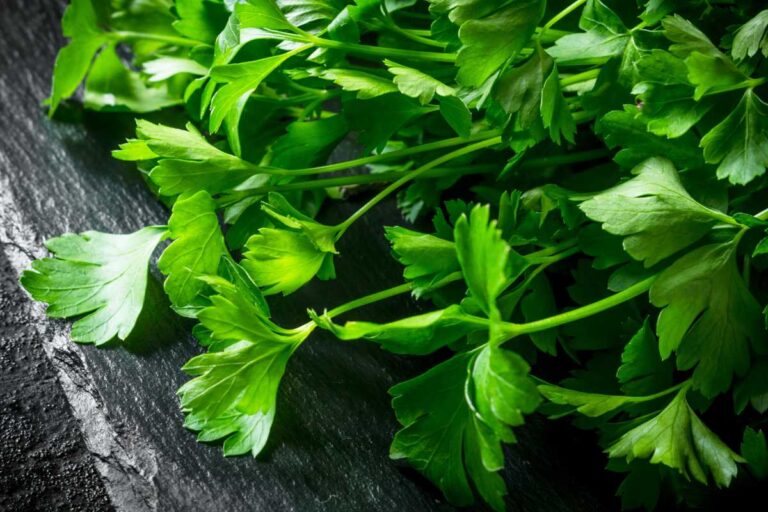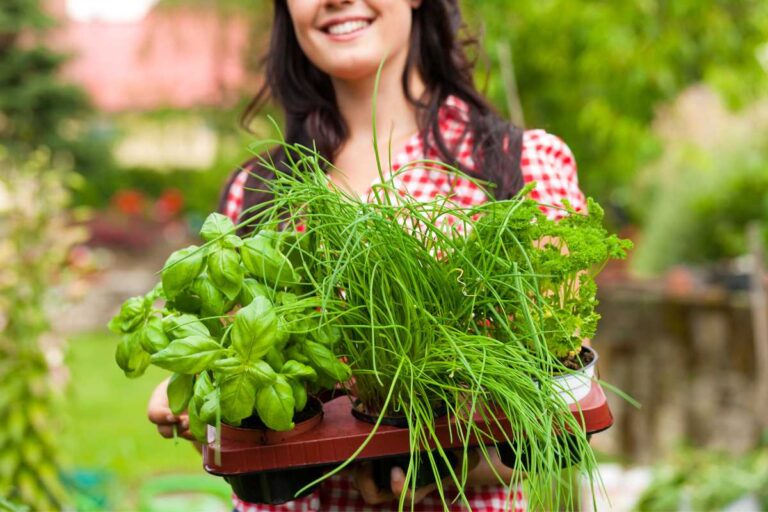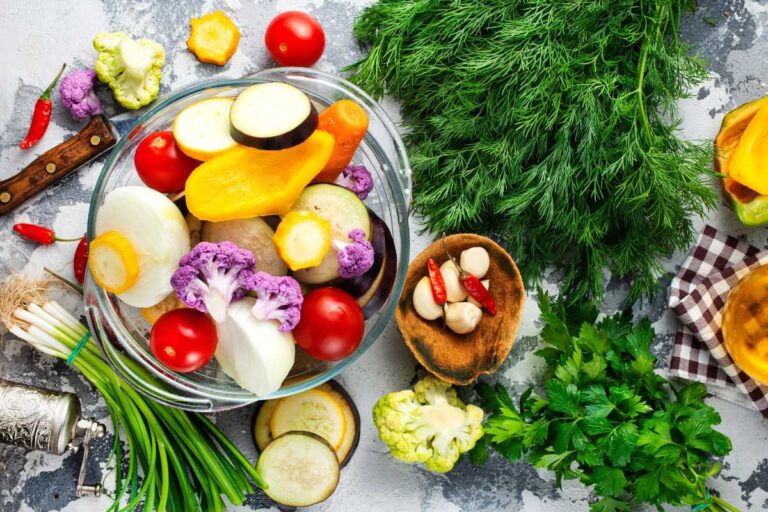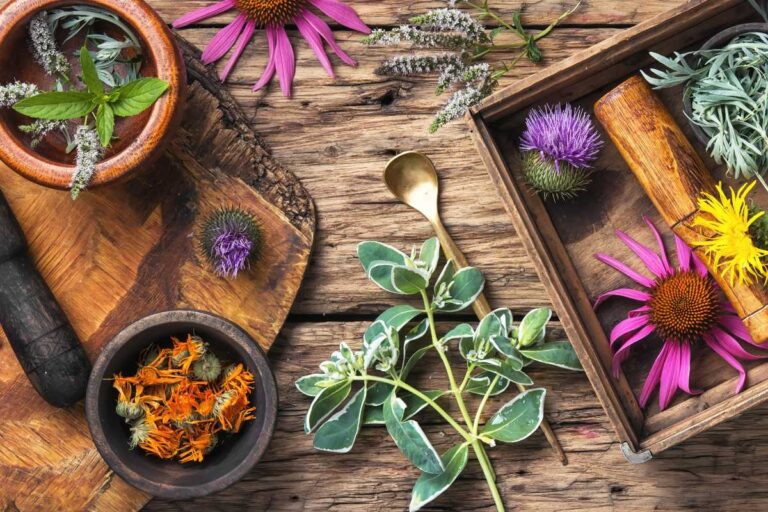The Best Herbs to Grow in Containers: Unveiling the Top 4 Choices for Container Gardening
The Best Herbs to Grow in Containers: Unveiling the Top 4 Choices for Container Gardening
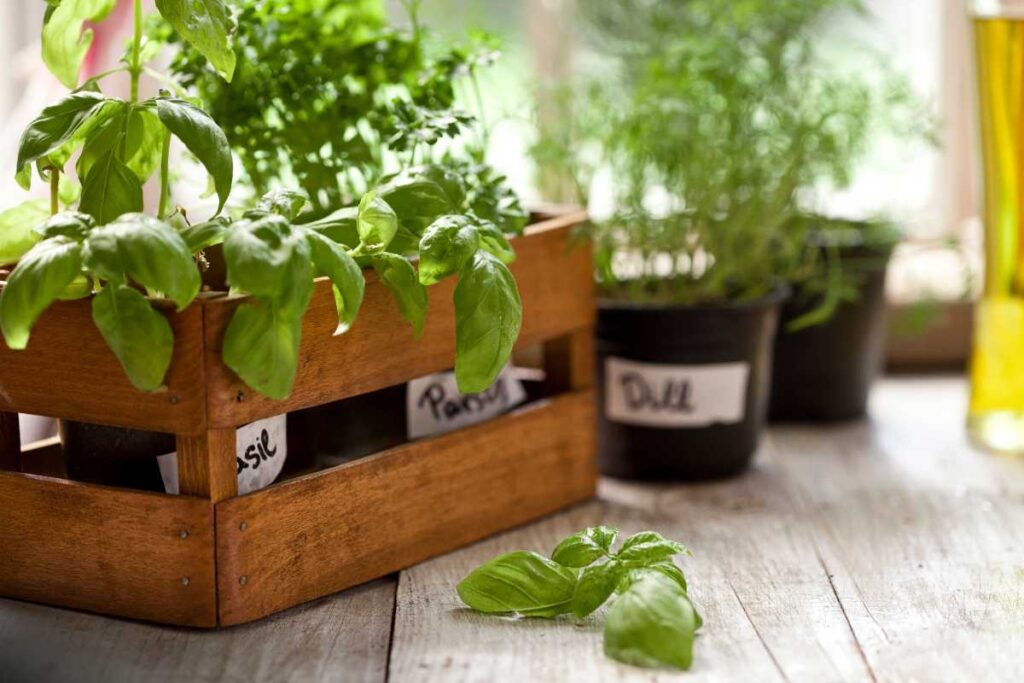
Container gardening is a fantastic way to bring the beauty and freshness of herbs into your home, even if you have limited outdoor space. Whether you live in an apartment with a small balcony or have a tiny backyard, growing herbs in containers can be a game-changer.
This method allows you to cultivate a variety of herbs that thrive in pots and plastic containers, providing easy access to fresh flavors for your culinary adventures.
By understanding the specific soil conditions, root divisions, and suitable container options like planter boxes or pots, you can successfully nurture these wonderful plants indoors or outdoors.
We will delve into the benefits of starting seeds indoors before transferring them to containers and discuss how container gardening extends beyond just herbs – vegetables can also flourish in this setup.
Get ready to discover the joys of container gardening as we dive into the world of aromatic herbs that are perfect for small spaces and limited outdoor areas.
| Tool | Explanation |
|---|---|
| 1. Trowel | A small handheld tool with a pointed blade used for digging and transferring soil. It is essential for planting herbs in containers. |
| 2. Pruning Shears | These are used for trimming and shaping herbs in containers. They have sharp blades that make clean cuts, promoting healthy growth. |
| 3. Hand Fork | A small tool with short, sturdy tines used for loosening soil and removing weeds in container gardens. It helps maintain the health of the herbs. |
| 4. Watering Can | An essential tool for container gardening, it allows precise watering of herbs without overwatering or damaging the delicate roots. |
| 5. Gardening Gloves | These protect your hands from thorns, prickles, and dirt while working in the garden. They provide comfort and prevent injuries. |
| 6. Plant Labels | These are used to identify and keep track of different herbs in containers. They help in organizing and maintaining a well-planned garden. |
| 7. Potting Mix | A high-quality potting mix provides the necessary nutrients, drainage, and aeration for herbs in containers. It ensures healthy growth and development. |
Tired of struggling with outdoor herb gardens in unpredictable weather? Discover the secret to successful herbal gardening indoors and enjoy fresh herbs year-round. Check out our article now!
Benefits of Growing Herbs in Containers
Growing herbs in containers offers a multitude of benefits that make it an attractive option for both seasoned gardeners and beginners alike. Whether you have limited space or lack a garden altogether, container growing allows you to enjoy the convenience of having fresh herbs right at your fingertips. Let’s explore some of the key advantages and why it’s worth considering this approach.
Enjoy the Convenience of Having Fresh Herbs
One of the primary benefits of container growing is the ease with which you can access fresh herbs whenever you need them. By placing pots or containers near your kitchen, balcony, or windowsill, you eliminate the need to venture outside into a larger garden area.
Instead, simply step over to your herb containers and pluck off a sprig or two as required for cooking or garnishing your dishes. The proximity ensures that your herbs retain maximum freshness and flavor, enhancing the overall taste of your culinary creations.
Experience the Joy of Growing Your Own Herbs
Container gardening provides an excellent opportunity to experience the joy and satisfaction that comes from nurturing plants from seedlings to fully grown herbs. Even without a large garden space, anyone can embark on this fulfilling journey by choosing suitable containers and selecting their favorite herbs to grow.
Witnessing tiny seeds transform into thriving plants brings a sense of accomplishment and connection with nature that can be truly rewarding.
Avoid Common Gardening Challenges
Growing herbs in containers helps overcome several common challenges associated with traditional gardening methods. Soil quality is easier to control when using potting mixes specifically formulated for container growth.
This eliminates concerns about poor soil conditions or contamination from previous plantings. Pests and diseases are often less prevalent in container gardens due to their elevated position away from ground-dwelling insects and pathogens.
Container growing also allows greater flexibility in terms of sunlight exposure. You can easily move your herb containers around throughout the day to ensure they receive optimal light conditions without being limited by the fixed location of a garden bed.
This adaptability proves particularly beneficial in regions with extreme weather conditions or for those who live in apartments or urban environments.
Tips for Successful Herb Container Gardening
Choosing the Right Containers
To ensure optimal herb growth, it is crucial to choose the right size and type of containers. The container should be spacious enough to accommodate the herb’s root system and allow room for growth. Consider using pots that are at least 6-8 inches deep for most herbs, while larger varieties may require deeper containers.
When selecting a container, opt for those made from materials like terracotta or plastic. Terracotta pots provide good airflow to the roots and prevent waterlogging. On the other hand, plastic containers retain moisture better and are lightweight, making them easier to move around.
Ensuring Proper Drainage
Proper drainage is essential for preventing waterlogged roots and maintaining healthy plants. Without adequate drainage, excess water can accumulate in the container, leading to root rot and fungal diseases.
To ensure proper drainage:
- Choose containers with drainage holes at the bottom.
- Place a layer of small stones or gravel at the bottom of the pot before adding soil. This helps create a space for excess water to drain away from the roots.
- Use well-draining potting soil specifically formulated for container gardening.
Remember not to overwater your herbs as this can also lead to waterlogging even with proper drainage.
Providing Adequate Sunlight, Water, and Nutrients
Herbs thrive in sunny locations, so it’s important to provide them with adequate sunlight. Place your containers in an area that receives at least six hours of direct sunlight each day. If you have limited sun exposure in your garden or balcony, consider using artificial grow lights to supplement natural light.
When it comes to watering your herbs:
- Check soil moisture regularly by inserting your finger about an inch into the soil. Water only when it feels dry.
- Avoid overhead watering as this can lead to leaf diseases.
- Water slowly and thoroughly until you see water draining from the bottom of the container.
To promote strong herb growth, provide nutrients through regular fertilization. Use a balanced water-soluble fertilizer or organic compost every two to four weeks during the growing season. Follow the instructions on the product label for proper dilution and application.
By following these tips for successful herb container gardening, you can create an ideal environment for your herbs to flourish.
Remember to choose appropriate containers, ensure proper drainage, and provide adequate sunlight, water, and nutrients. With a little care and attention, you’ll be able to enjoy a bountiful harvest of fresh herbs right at your fingertips!
1. Thyme: Ideal for Tight Spaces
Thyme is a versatile herb that thrives in small containers and tight spaces, making it an excellent choice for those with limited indoor or outdoor space.
Its compact growth habit and ability to adapt to various conditions make it perfect for balcony gardens, kitchen window boxes, or even hanging baskets near the kitchen door.
One of the key advantages of growing thyme in containers is its ability to flourish indoors. Whether you have a sunny kitchen window or a partially shaded spot, thyme can thrive with just a few hours of sunlight each day.
This makes it an ideal option for urban dwellers or anyone who wants fresh herbs within arm’s reach in their culinary haven.
Thyme doesn’t need much room to grow. A pot as small as 6 inches in diameter can accommodate this herb without any issues. Its low-maintenance nature also means that you don’t have to worry about frequent repotting or aggressive spreaders taking over your garden space.
Incorporating thyme into your container garden design opens up endless creative possibilities. Here are some ideas to inspire you:
- Mix and Match: Combine thyme with other herbs like rosemary, basil, or parsley in larger containers for a vibrant and aromatic display.
- Vertical Gardens: Utilize wall-mounted planters or hanging baskets to maximize space while adding a touch of greenery to your surroundings.
- Tiered Plant Stands: Arrange multiple pots of different herbs on tiered stands, creating an eye-catching focal point that saves space.
- Edging Containers: Line the edges of your patio or balcony with smaller containers filled with thyme plants, adding both beauty and functionality.
Thyme’s versatility extends beyond its visual appeal; it offers numerous culinary benefits too. Its fragrant leaves add depth and flavor to various dishes such as soups, stews, marinades, and roasted vegetables. Fresh thyme can be used as a garnish or infused in oils and vinegars for an extra kick of flavor.
To ensure your thyme thrives in containers, keep these tips in mind:
- Well-Drained Soil: Thyme prefers well-drained soil to prevent waterlogging, so choose a potting mix designed for container gardening.
- Moderate Watering: While thyme is drought-tolerant, it still requires regular watering. Allow the soil to dry slightly between waterings to avoid overwatering.
- Pruning: Regularly trim your thyme plants to encourage bushier growth and prevent them from becoming leggy.
- Harvesting: Harvest the leaves as needed by snipping sprigs close to the stem. This will promote new growth and ensure a fresh supply of flavorful thyme.
2. Lemon Balm: Controlling Growth with Containers
Lemon balm, with its vibrant lemon scent and refreshing flavor, is a delightful herb to have in your garden. However, its vigorous growth can quickly turn into an unruly mess if left unchecked. To harness the potential of lemon balm while preventing it from spreading uncontrollably, consider confining it to containers or pots.
By containing lemon balm in pots or planters, you can effectively control its growth and keep it from taking over your garden.
This method is particularly useful if you have limited space or want to avoid the hassle of constant maintenance. Here’s why growing lemon balm in containers is a smart choice:
- Preventing Uncontrolled Spread: Lemon balm has a tendency to spread rapidly through underground rhizomes and self-seeding. By planting it in containers, you create a physical barrier that prevents its roots from spreading beyond the confines of the pot. This containment strategy ensures that lemon balm stays where you want it and doesn’t invade other areas of your garden.
- Easy Maintenance: Growing lemon balm in containers simplifies maintenance tasks like weeding and pruning. Since the herb is confined to a specific area, you won’t need to spend as much time pulling out unwanted shoots or trimming back excessive growth. This makes container gardening an ideal option for those who prefer low-maintenance herbs.
- Mobility and Flexibility: Container-grown lemon balm offers the advantage of mobility. You can easily move the pots around your garden or even indoors based on sunlight requirements, temperature changes, or aesthetic preferences. This flexibility allows you to optimize growing conditions for your lemon balm plants throughout different seasons.
- Controlled Harvesting: When lemon balm is grown in containers, it becomes easier to manage its harvests effectively. You can position the pots within arm’s reach near your kitchen door or patio, making it convenient to pluck fresh leaves whenever you need them. This ensures a continuous supply of lemon balm for culinary purposes or herbal infusions.
To successfully grow lemon balm in containers, keep the following tips in mind:
- Choose a container that is at least 12 inches deep to accommodate the herb’s extensive root system.
- Opt for well-draining soil and ensure proper drainage holes in the pot to prevent waterlogging.
- Place the container in a sunny location with at least six hours of direct sunlight per day.
- Water regularly but avoid overwatering, as lemon balm prefers slightly moist soil.
- Fertilize occasionally with a balanced organic fertilizer to promote healthy growth.
3. Parsley: Heat-Tolerant and Versatile Herb
Parsley, also known as leaf parsley, is a culinary herb that deserves a prime spot in your container garden. Not only is it heat-tolerant, but it also offers versatility in both its usage and growing methods.
Withstanding Hot Weather Conditions
One of the remarkable characteristics of parsley is its ability to withstand hot weather conditions. Unlike other herbs that may wither under scorching temperatures, parsley thrives and remains vibrant even in the sweltering heat. This makes it an excellent choice for container gardens, especially if you live in regions with long summers or dry climates.
Culinary Uses of Parsley
Parsley stands out as an essential ingredient in various dishes. Its fresh and vibrant leaves add a burst of flavor and visual appeal to numerous recipes. From garnishing salads to enhancing the taste of poultry dishes, parsley offers endless possibilities.
Here are some popular culinary uses of parsley:
- Garnishes: Sprinkle finely chopped parsley on top of your favorite dishes for an added touch of freshness.
- Main Ingredients: Incorporate parsley into pesto sauces or use it as a key component in herb-based marinades.
- Salads: Toss a handful of freshly chopped parsley into your salads for an extra layer of flavor.
- Cooking: Add minced parsley to soups, stews, or sautéed vegetables to elevate their taste profiles.
With different varieties available, such as cilantro or coriander (which are often confused with each other), tarragon, oregano, garlic chives, pineapple mint, sorrel, dill, and garlic itself – you can experiment with various combinations and create unique flavors tailored to your preferences.
Growing Parsley Indoors or Outdoors
Whether you have limited space indoors or prefer the traditional outdoor gardening experience, parsley adapts to both growing environments.
- Indoor Gardening: To grow parsley indoors, choose a sunny spot near a window where it can receive at least six hours of sunlight daily. Plant the seeds in well-draining soil and keep them moist. Remember to rotate the pot occasionally to ensure even growth.
- Outdoor Gardening: For outdoor cultivation, select a container with good drainage and place it in an area that receives partial shade. Parsley prefers slightly acidic soil and requires regular watering to keep it hydrated during hot weather.
By understanding how to cultivate parsley indoors or outdoors, you can enjoy its fresh flavors year-round, regardless of your living situation or climate.
4. Rosemary: Aromatic and Hardy Herb for Containers
Rosemary is a versatile herb that not only adds a delightful fragrance to your garden but also thrives in containers. Its hardy perennial nature makes it an ideal choice for those who want to experience the beauty of fresh herbs without the hassle of a traditional garden.
Whether you have limited space or simply prefer the convenience of portable pots, growing rosemary in containers is a rewarding endeavor.
Experience the Delightful Fragrance of Rosemary
One of the most enchanting aspects of growing rosemary in containers is its aromatic scent. As you brush against its leaves, the air becomes infused with a pleasant aroma that can instantly uplift your mood. The fragrance of rosemary has been known to reduce stress and anxiety, making it a perfect addition to any outdoor seating area or balcony garden.
Benefit from Rosemary’s Resilience Against Harsh Weather Conditions
Unlike some delicate herbs, rosemary is incredibly resilient and can withstand harsh weather conditions. By planting it in containers, you have the advantage of being able to move it around depending on the weather forecast. This flexibility ensures that your precious herb remains protected during extreme temperatures or unexpected frosts.
Discover Different Ways to Use Rosemary Leaves
The versatility of rosemary extends beyond its aromatic qualities and resilience. Its leaves are packed with flavor and can be used in various culinary creations, aromatherapy blends, and more. Here are some exciting ways to incorporate rosemary into your daily life:
- Cooking: Sprinkle freshly chopped rosemary leaves over roasted vegetables or use them as a flavorful seasoning for grilled meats.
- Aromatherapy: Create homemade potpourri by drying rosemary sprigs and combining them with other fragrant herbs like marjoram.
- Infused Oil: Make your own infused oil by steeping rosemary leaves in olive oil for several weeks. This fragrant oil can be used for cooking or as a luxurious massage oil.
- Nasturtium Companion: Plant rosemary alongside nasturtiums to repel pests and enhance the overall health of your container garden.
Fragrant and Successful Herb Garden
We also discussed specific herbs that thrive in containers, including thyme, lemon balm, parsley, and rosemary. By growing these fragrant and versatile herbs in your own garden, you can enjoy their fresh flavors and aromas while saving space.
To create a successful herb garden in containers, remember to choose the right size pots with good drainage, use quality potting soil, and provide adequate sunlight and water. With these essential tips in mind, you can cultivate a thriving herb garden even if you have limited space or lack a traditional garden bed.
If you’re ready to embark on your own herb gardening journey, start by selecting the herbs that best suit your needs and preferences.
Whether you’re looking for a compact herb like thyme for tight spaces or an aromatic herb like rosemary that adds flavor to various dishes, there is an abundance of options available for container gardening. Get started today and enjoy the convenience of having fresh herbs at your fingertips!
FAQs
Can I grow herbs indoors?
Yes! Many herbs can be successfully grown indoors as long as they receive sufficient sunlight or artificial light. Choose a sunny spot near a window or consider using grow lights to provide the necessary light for healthy growth.
How often should I water my container-grown herbs?
The frequency of watering will depend on various factors such as the type of herb, pot size, weather conditions, and soil moisture levels. As a general rule of thumb, check the top inch of soil regularly; if it feels dry to the touch, it’s time to water.
Do I need to fertilize my container-grown herbs?
Container-grown herbs may benefit from occasional fertilization to replenish nutrients in the soil. Use a balanced organic fertilizer according to the package instructions, typically every 4-6 weeks during the growing season.
Can I grow multiple herbs in the same container?
Yes, you can grow multiple herbs in the same container as long as they have similar growth requirements and enough space to thrive. Be mindful of their sizes and growth habits to prevent overcrowding.
How do I harvest herbs from containers?
To harvest your container-grown herbs, use clean and sharp scissors or pruners to snip off the desired amount of foliage. Avoid removing more than one-third of the plant at a time to ensure continued growth and vitality.

